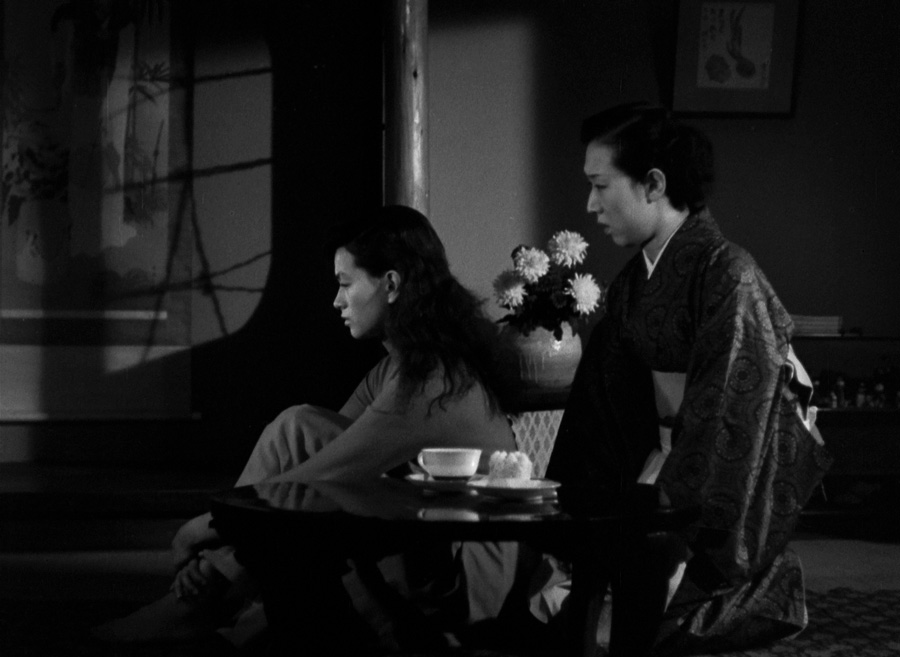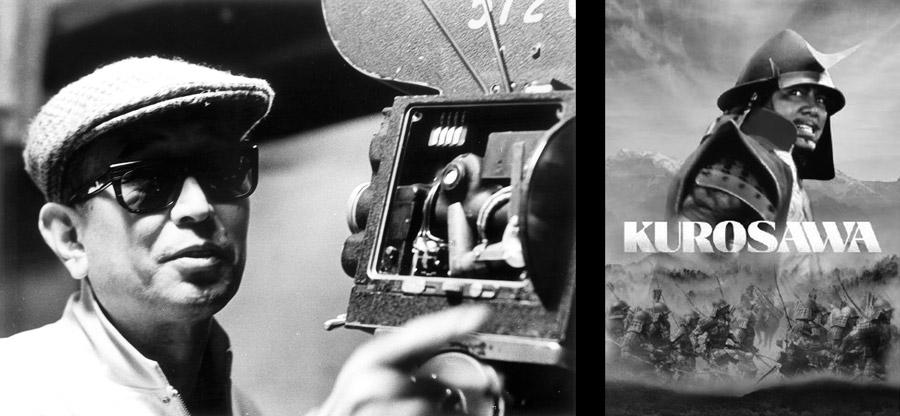The Moon Has Risen (Tsuki wa noborinu, Japan 1955) is a bright ensemble comedy of errors about youthful hubris and romantic misunderstandings, directed by Kinuyo Tanaka (who also makes a cameo appearance as a put-upon servant) using a script gifted by her friend and mentor Yasujirō Ozu (jointly written with Ryôsuke Saitô). Tanaka’s second directorial film, is a unique feminine perspective on the romantic fortunes of three sisters living quiet lives near the Todaiji temple complex in the town of Nara after the war.
Plot
The lead character Setsuko (Mie Kitahara) is the youngest daughter or the wealthy Asai family and lives with her father, Mokichi (the great Chishu Ryu), older sister Ayako (Yoko Sugi) and widowed eldest sister, Chizuru (Hisako Yamane) in the quiet and picturesque town of Nara. The tranquil location is best known for its deer, which is not the ideal attraction for most people in their twenties (regardless of the era), and provides a stark contrast to the burgeoning metropolis of Tokyo which Setsuko so yearns for.
When Wataru Amamiya (Ko Mishima), an electrical engineer, arrives in Nara to investigate the town’s radio tower, Setsuko sees his presence as a chance (and source of entertainment) to act as a matchmaker for her sister Ayako. Together with handsome lodger and confidant Shoji Yasui (Shoji Yasui, who adopted the name of his character in this film, his motion picture debut, as his stage name), she plots to marry off her resistant sister. In a positive turn of events the secretive lovers begin to correspond in code much to the frustration of the plotters but enjoyment of the rest of the family and those around them. However when Setsuko herself falls in love, she is not quite so adept at manipulating matters.
Tanaka and Her Peers
It may be wise not to compare her to the male directors that made careers out of putting her in front of the camera, however, these were her filmmaking peers in the1950s. In terms of aesthetics, it is undeniable that Tanaka uses some of the techniques of the classical master. For example, the film opens with a series of transitional shots of Nara deer in a lightly forested field, a stylistic device that will recur throughout the film and one used in many films of the same era. Tanaka also makes use of straight-on front shots of the characters as they speak with the camera located 90cm off the ground, mimicking the famed Ozu shot. This reproduction of Ozu’s aesthetics is most apparent in the first third of the film, which later gradually evolves to exhibit its own style full of brightly highlighted scenes of sunlight and moonlight streaming through shoji doors and softened side angle beauty shots of the characters. The impact of the initial scenes that exude Ozu’s distinct and familiar style are generally eclipsed by the cinematographic style of the rest of the film, which is in fact rather dynamic.

Written by the legend himself, it’s common to think of The Moon Has Risen as an honorary Yasujirō Ozu film. While it may have some of his signature elements – specific poetic flourishes (like pillow shots) for instance or a focus on generational conflict – it would be reductive to say that Tanaka has simply followed in her mentor’s footsteps and made an Ozu film. Arguably what she has done is take the best elements from Ozu’s script and paired it with her unique understanding of the world.
Her understanding of design, both interior and exterior in relation to bodies is something that shows the influence of Naruse, but her own way of rendering this relationship is entirely unique and something that anticipate dominant trends in the 1960s European arthouse films. For example, when Ayako and Mr Amamiya walk along the garden, admiring the titlar full moon the camera follows them. They don’t do anything, but Tanaka’s observing shot of their bodies feels free and sincere. Their slight hesitation is so simple yet so exciting. The Moon Has Risen feels like the works of many great Japanese directors at times, but there are key moments such as the ones described above that feel like something that only she could have done. Although the fingerprints of her peers may be all over the narratives and even some of the stylistic choices, Tanaka brings an energy and candour to the film that is unmatched by any Japanese filmmaker in the 1950s.
Love is a universal theme that has inspired the minds of many creatives in history; certainly everyone can recall a love story that they have read, listened to or watched. The gender point of view of these narratives, however, arguably are not equal within the general repertoire and the female perspective has historically been given less importance and even been treated as asinine. But there is something touching, precocious and wise about a feminine perspective on love that some authors and directors have been able to express,The Moon Has Risen being a brilliant example.

Although the setting (from a Western perspective) is exotic, there is something very familiar about the trifling plot that sets into motion this comedy of manners. For those who have read Emma by Jane Austen, you may notice a lot of similarities in not only the plot line but the general commentary around the importance of communication and the use of comedy as a tool for self reflection. The meddling Setsuko, like Emma, cannot but help herself when an opportunity to quell her boredom is presented. The two female protagonists both fancy themselves matchmakers and stop at nothing in their pursuits of creating the perfect pairing, but they are both equally naive in love and struggle to comprehend their own thoughts and emotions when it is they themselves who are about to be paired. It is female decision, female sentiment and female action that drive the plot lines in both works.
Tanaka has consciously chosen to make the plot line of this female driven, something that her male peers would not have done. Although there are male characters they are always in the background allowing our focus as the viewer to be squarely on the daughters. Their sibling conflict may seem flimsy and light, but Tanaka grants it a value and respect unequalled in Japanese cinema.
Final Thoughts

The Moon Has Risen is a ‘home drama’ that harnesses a comical and relaxed tone to recount the romances of three sisters. Brimming with fashion, charm, and a modernist spirit, it flows between the pastoral quietude of a traditional Japan, with its elegant backdrop of temple architecture and exquisite gardens, and a Japan on the brink of transformation, echoed by the shifts seen in the three women. The relationship between the three sisters is adeptly drawn, as is the burgeoning attraction between Setsuko and Shoji. It is a delicate fable of growing up and a real triumph in its depiction of female spirit.
Find out more about BFI’s Kinuyo Tanaka: A Life in Film retrospective here.














































